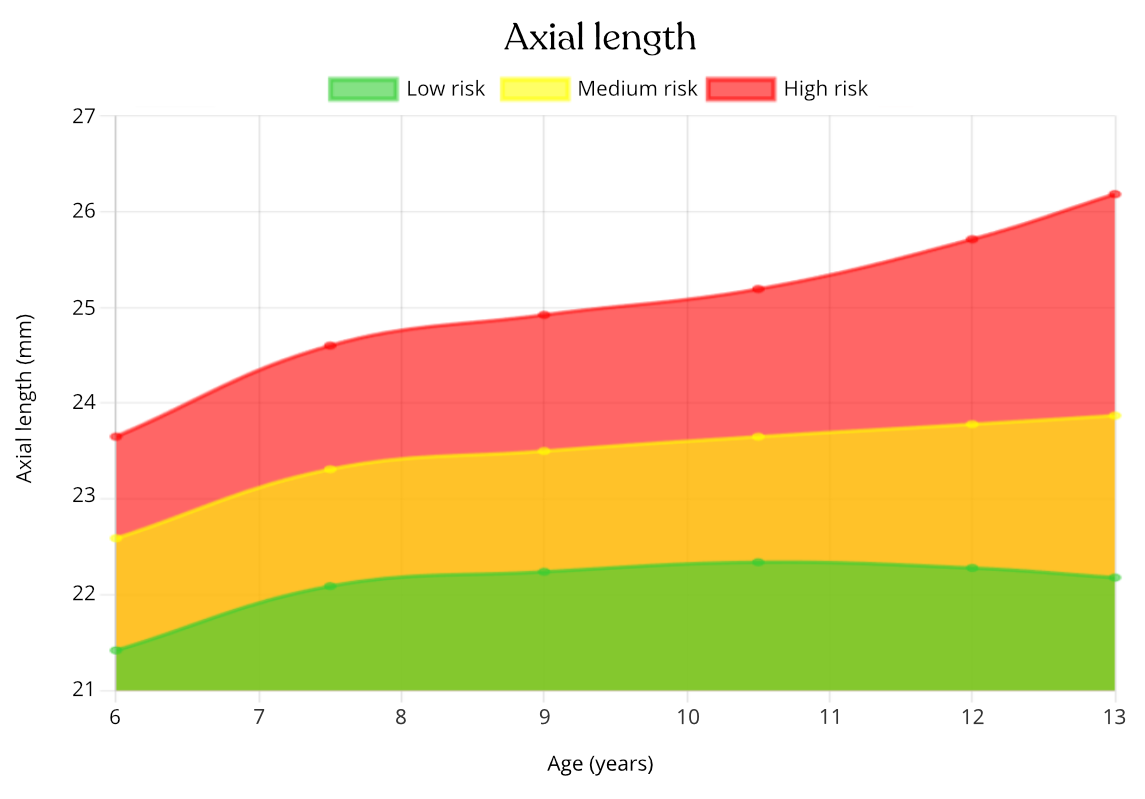What is Myopia (Nearsightedness)?
Myopia, also called nearsightedness, is an eye condition where objects at near are clear but objects far away are blurred. It is caused by the eye being slightly too long.



Axial length growth chart, showing the normal expected ocular axial lengths. Eyes with large axial lengths have a higher degree of long term risk of vision loss.
Controlling Nearsightedness in Children
MiSight 1 Day Myopia Control Contact Lenses

Why choose MiSight?
- MiSight 1 day is the first and only contact lens FDA-approved to slow the progression of myopia in children age 8-12 at initiation of treatment.
- 59% reduction in myopia progression with MiSight 1 day lenses.
- Slowed the rate at which the eye lengthens at 52%
- children can insert the soft, daily wear, single use contact lenses in their eyes in the morning, wear them for at least 10 hours during the day then dispose them in the evening.
- MiSight contact lenses provide children with significantly better quality of life than children wearing glasses, especially regarding athletics and appearance.
- Allows you to avoid the worry of losing or breaking glasses.
How does it work?
The ActivControl™ technology in MiSight® 1 day uses vision correction zones and treatment zones within the lenses to slow axial elongation. By including both types of zones in the lens, it simultaneously corrects the child’s vision today, while creating myopic defocus in all gazes.
The correction zones allow for clear vision throughout the day, while the treatment zones discourage abnormal elongation of the eye.

No glasses.
No contact lenses.
No LASIK.
Introducing Ortho-K Treatment
Learn More
Atropine Eye Drops
Atropine eye drops are placed in the eye once daily and treatment is continued as long as myopia progression is considered a risk. Studies show that daily use of a low dose of atropine can slow the progression of myopia. Atropine eye drops dilate the pupil which prevents the eye from being able to focus, which allows the mechanism to relax.

Why Us?
At Bonney Lake Family Eye Care, our myopia management program is unique because we prioritize personalized care and ongoing support:
- Dedicated Myopia Coordinator – Our specialized coordinator guides you through every step of the process, ensuring a smooth experience.
- No Child Left Behind – We closely monitor children every 3-4 months to track progression and adjust treatment as needed.
- 24/7 Access to Our Doctors – Parents and patients can reach out anytime, giving you peace of mind throughout treatment.
Our commitment ensures the best possible outcomes for your child’s vision.







